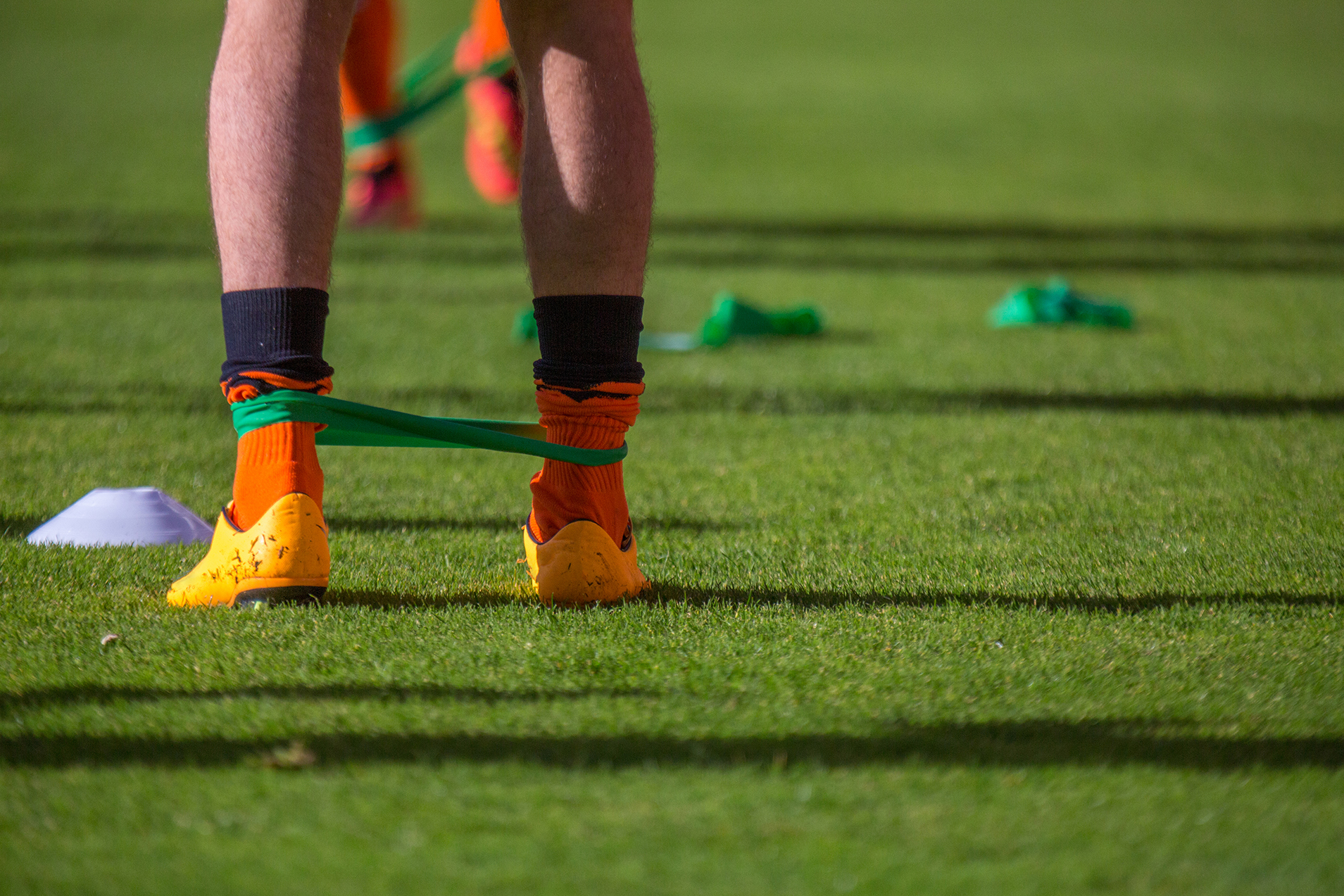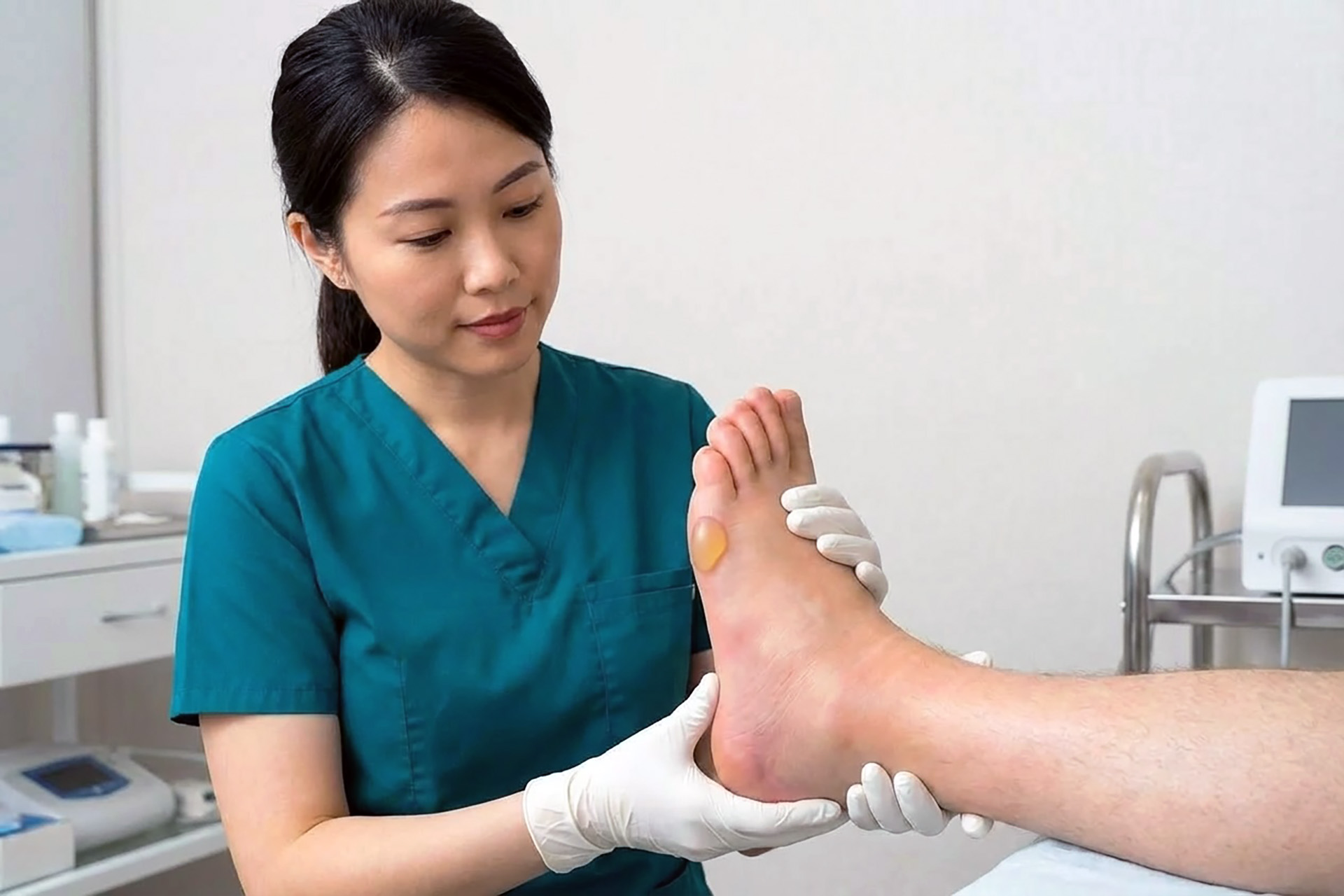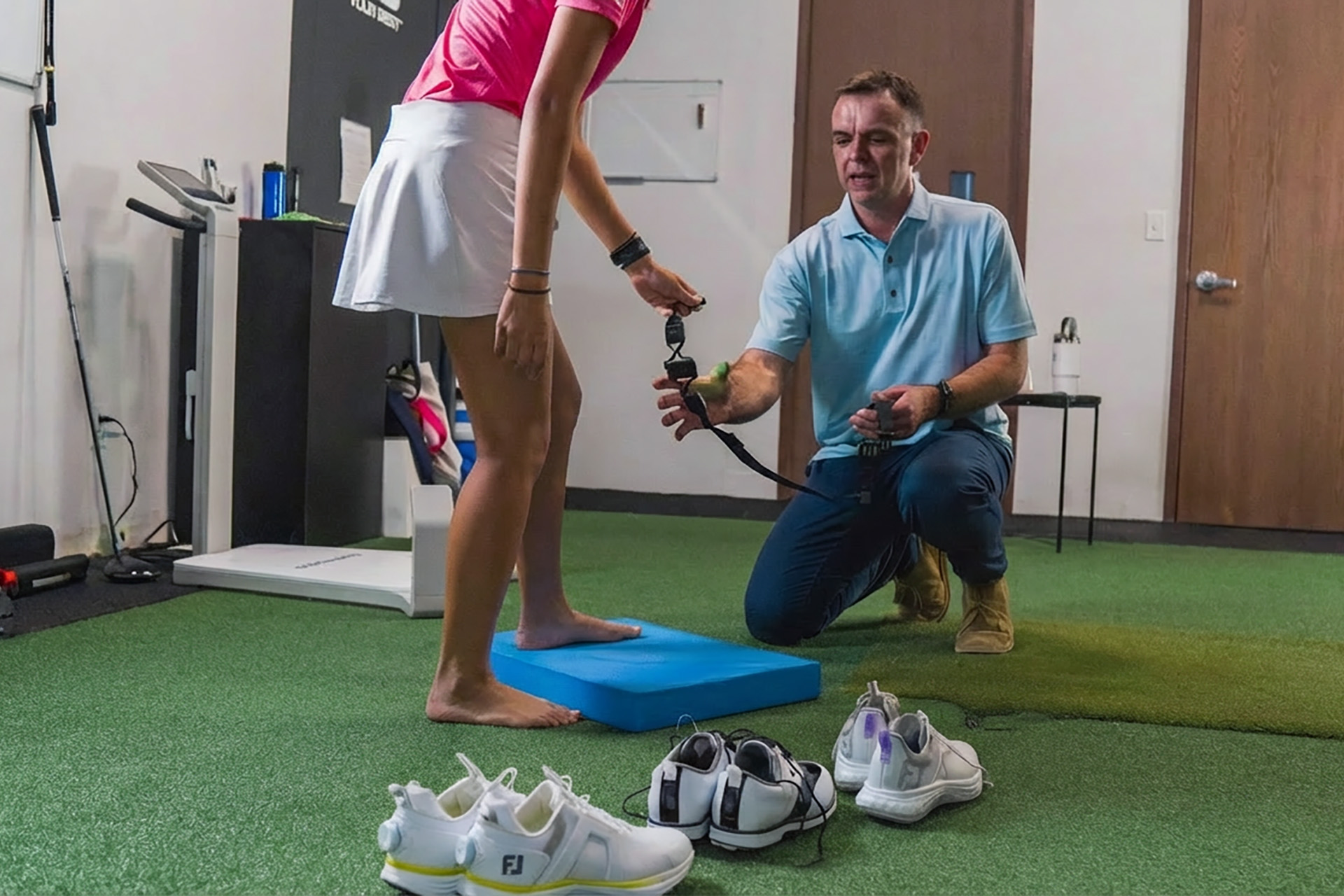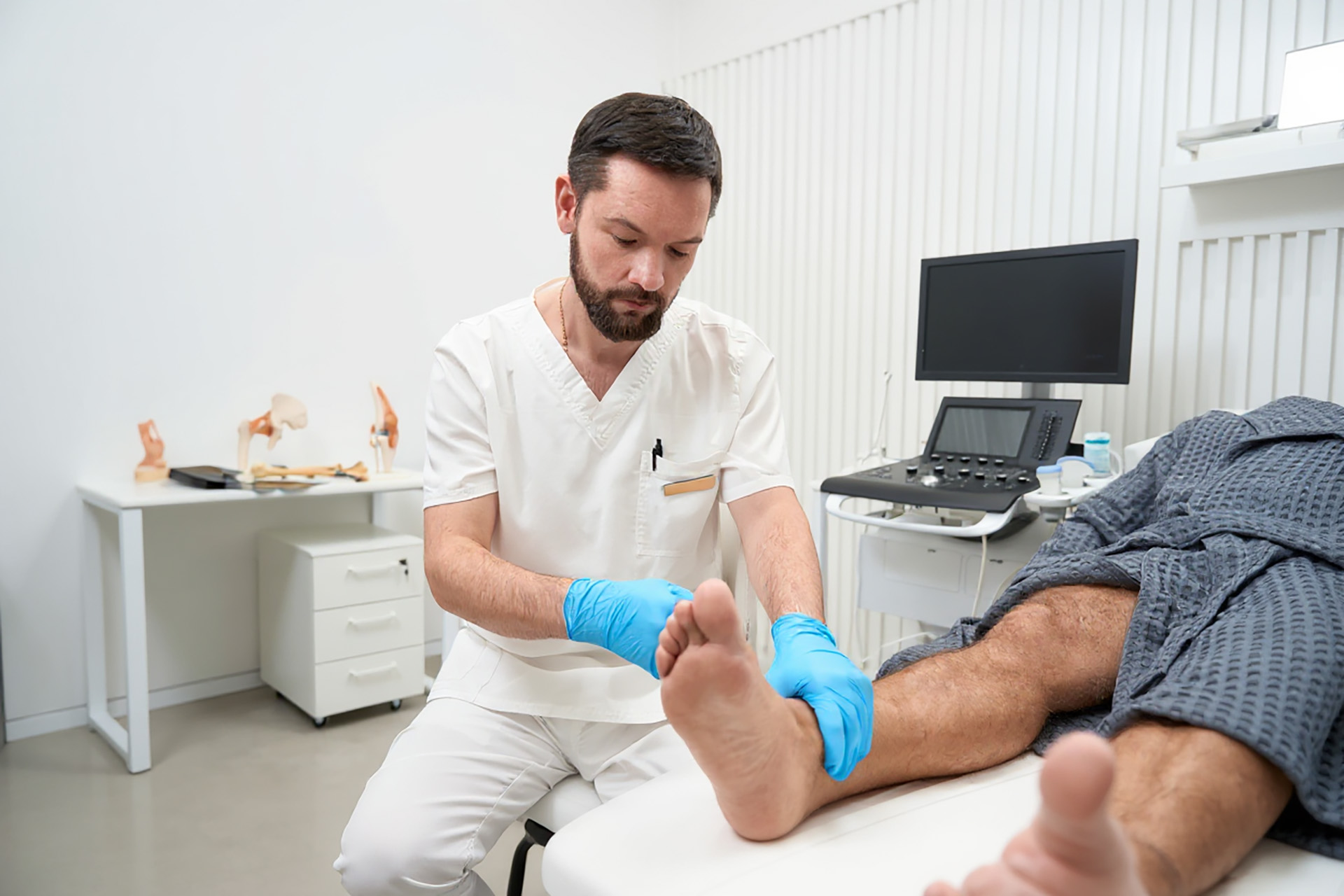Causes and Risk Factors of Talar Dome Injuries
The talus, positioned between your calf and shinbone, is crucial for ankle function. Its upper part, known as the talar dome, seamlessly connects with the tibia. This section is covered in smooth cartilage, essential for fluid joint movement. Although small, the talus plays a significant role in bearing the body’s weight and maintaining balance and flexibility. It also underpins the structural integrity of the foot’s arch. Therefore, any damage to the talus affects foot structure and can disrupt overall body biomechanics.
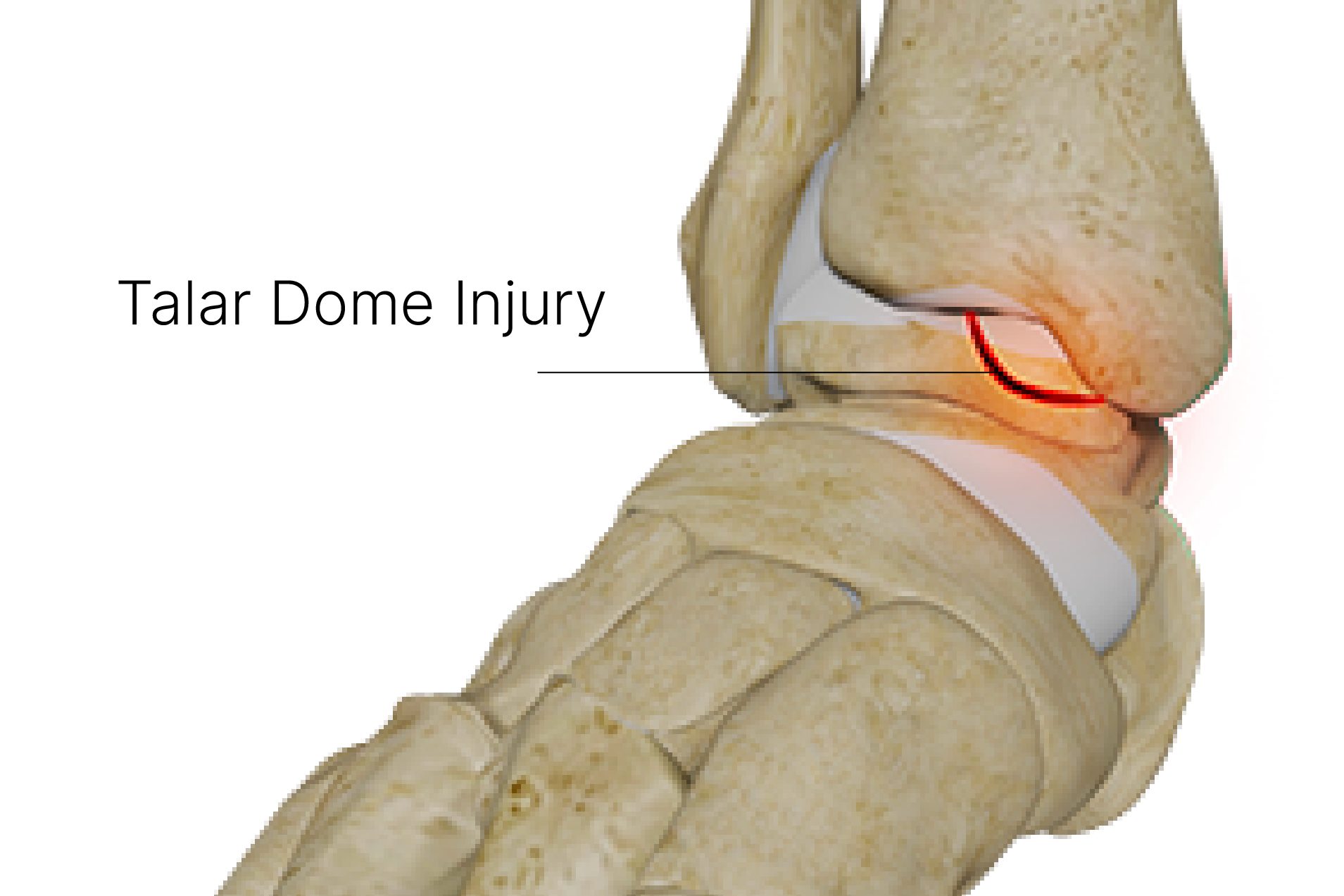
Ankle osteochondral lesions, particularly those in the talar dome, involve injuries to the cartilage and the bone beneath it. These lesions where the talus meets the shinbone and heel bone are critical for foot health, impacting mobility, flexibility, and balance. The nature of talar dome injury symptoms and the necessary treatment vary, depending on whether the cartilage or the bone is affected, and can significantly influence daily life.
A talar dome injury encompasses any damage to the cartilage or bone of the talus, a crucial element of your ankle joint. These injuries often stem from a single, acute incident or gradual wear and tear over time. Athletes and individuals engaged in high-impact activities are particularly susceptible, making this injury a significant concern in sports that involve repetitive foot and ankle stress.
Talar dome injuries arise from two primary sources: repetitive damage and acute trauma. Endurance sports like running or disciplines like gymnastics exert continuous stress on the ankle, potentially wearing down the cartilage over time. Similarly, training on hard or uneven surfaces can subject the ankle to excessive force, accelerating the risk of injury. In contrast, acute traumas, such as severe falls, can fracture the talus bone, causing talar dome injuries. These aspects underscore why athletes in high-impact sports face a heightened risk of such injuries.
Recognising the early signs of a talar dome injury and seeking prompt medical attention is key to preventing long-term complications. With appropriate care, individuals can manage these injuries effectively, maintaining their athletic performance and overall foot health.
Tell Tale Signs & Symptoms of Talar Dome Injuries
A primary indicator of a talar dome injury is deep, localised pain in the ankle, often originating from the front/anterior area. This specific talar dome pain pattern can be crucial in distinguishing the injury from a more common sprained ankle. Individuals with this injury typically report a significant increase in pain during activities that put stress on the affected ankle – such as pivoting, navigating inclines, landing firmly on their feet, or carrying heavy loads.
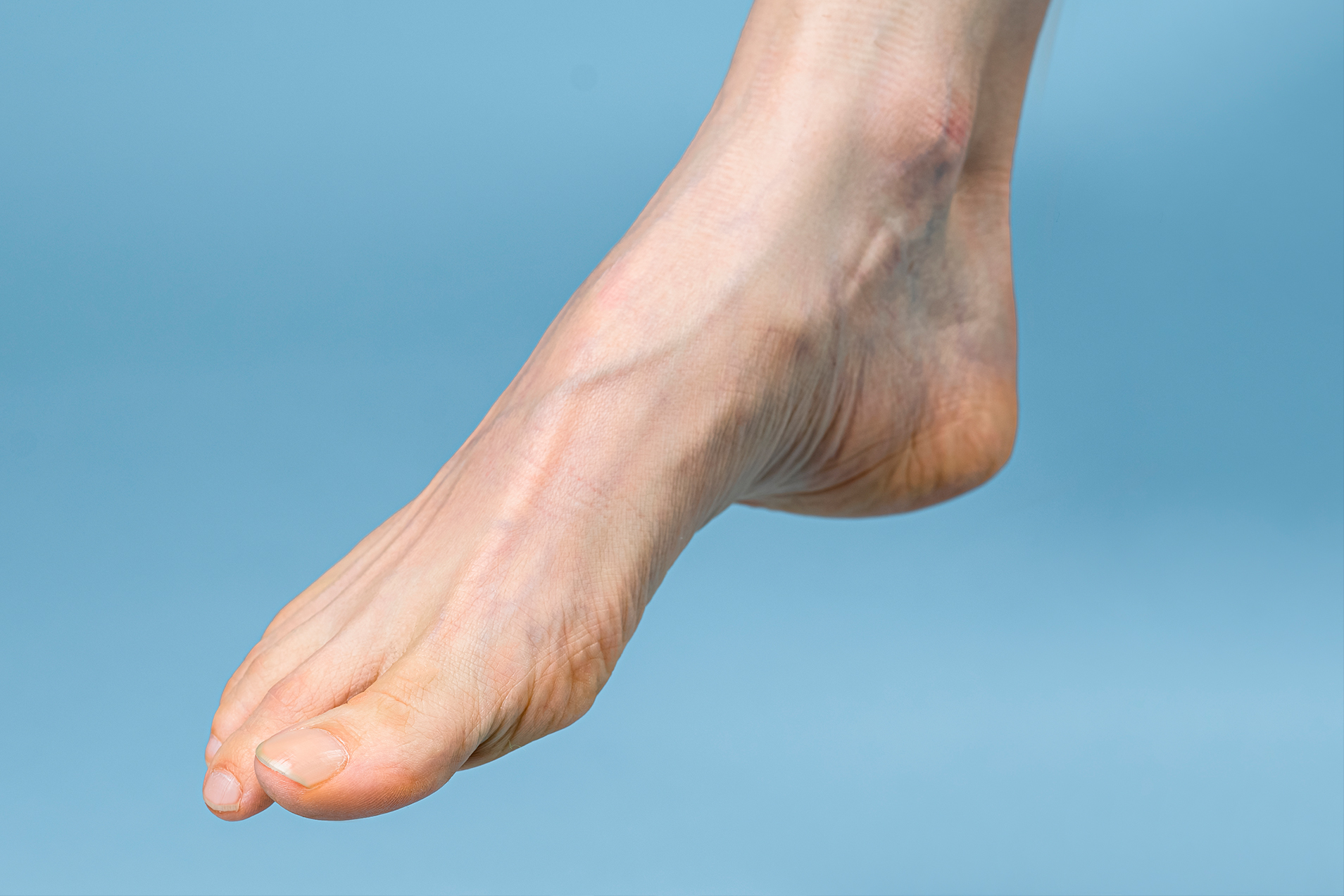
Additionally, a talar dome injury may present with swelling and stiffness in the ankle joint. A distinctive clicking noise during ankle movement is another telltale sign. Over time, these symptoms can escalate in severity, potentially leading to persistent limping or a complete inability to bear weight on the affected ankle.
Recognising these symptoms and seeking a prompt medical evaluation is crucial for athletes and active individuals. Engaging in athletic activities without a proper diagnosis can aggravate the condition, leading to further complications. Early intervention is key to a successful recovery, allowing for a quicker and safer return to sports and physical activities. That is why, if you’re experiencing any of these symptoms, consulting a healthcare professional for an accurate diagnosis and appropriate treatment plan is vital.
Podiatric Talar Dome Injury Management
Talar dome injuries are often difficult to diagnose because they bear similarities to other ankle injuries. This is why visiting a foot expert like a podiatrist when evaluating the condition is essential. Talar dome injuries can be broadly categorised into talar dome osteochondral lesions and subchondral fractures. Understanding the nuances of these conditions is crucial for effective talar dome injury management and recovery.
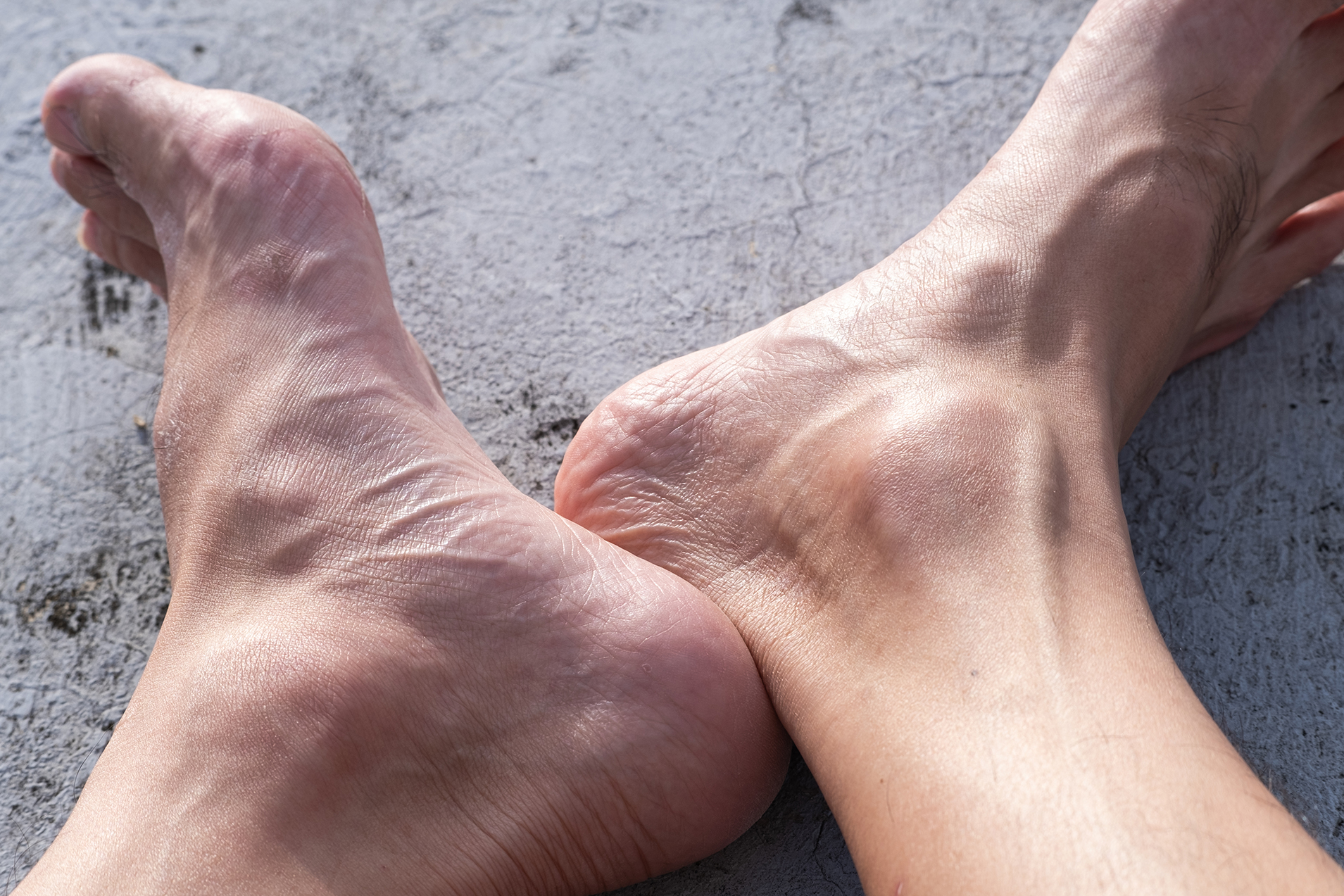
Early diagnosis and appropriate treatment prevent complications and ensure a smooth recovery. Your podiatrist will help manage pain and symptoms and guide you in regaining strength and function in your foot. Don’t let a talar dome injury set you back. Seek professional advice and actively engage in your journey to optimal foot health.
Addresses Cartilage Damage for Osteochondral Lesions
When it comes to talar dome osteochondral lesions, the focus is on the cartilage component of the injury. These lesions can often be managed conservatively, especially when detected early. The approach includes rest and reduced weight bearing of the injured area to give the ankle a break from weight-bearing activities. This respite allows the cartilage to begin its healing process.
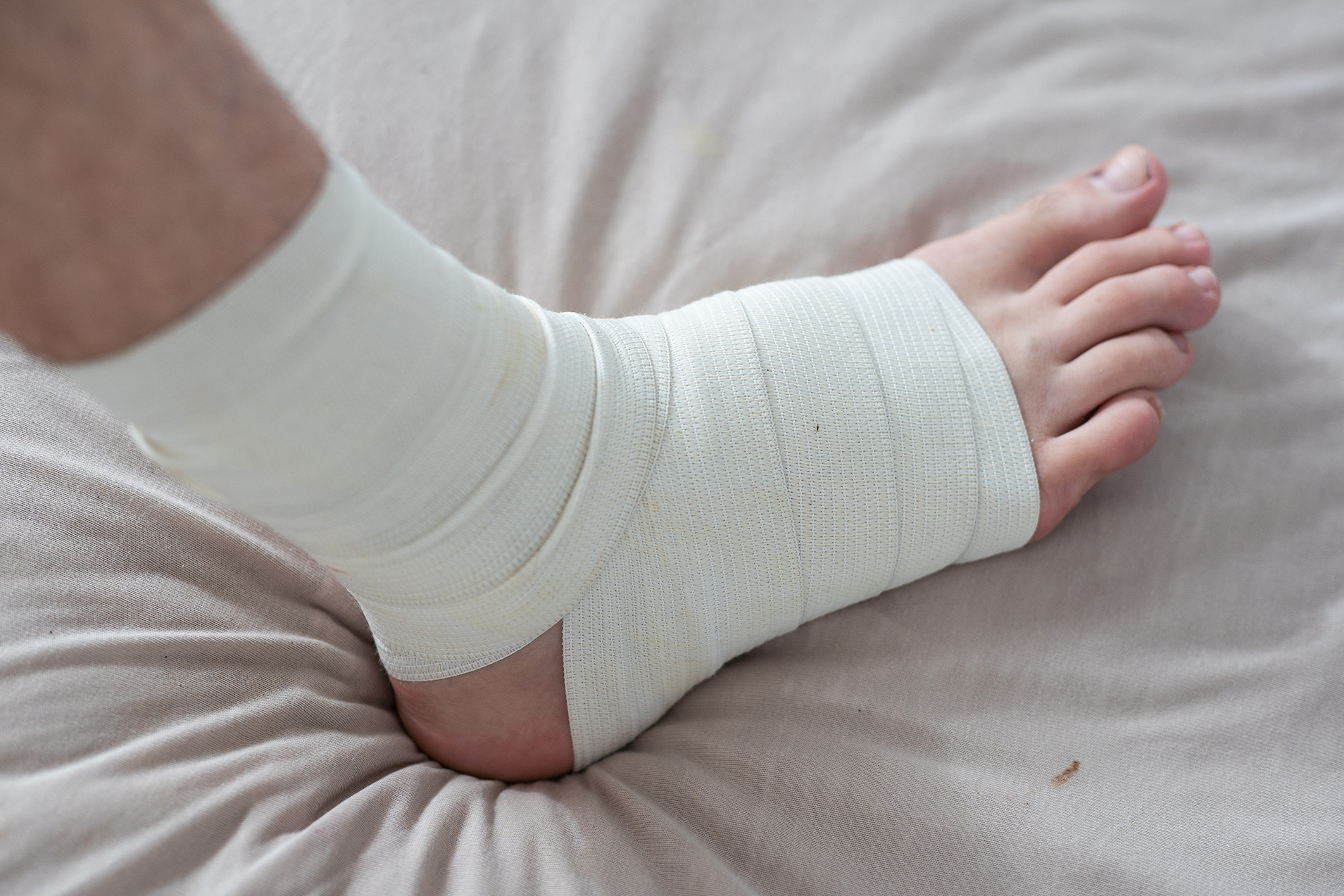
Ankle bracing can help stabilise and support the joint, maintaining alignment and reducing stress on the damaged area.
Specific physical therapy exercises that enhance ankle stability and strengthen the surrounding musculature are also key. This might include balance exercises, such as single-leg stands and proprioceptive training to enhance joint position sense.
Focus on Bone Injury for Subchondral Fractures
Subchondral fractures, on the other hand, are bone-related injuries. Conservative treatment here also starts with rest and immobilisation. Just like with cartilage injuries, rest is crucial. However, immobilisation might be more stringent, depending on the fracture severity.
Pain management with over-the-counter anti-inflammatory medications can help manage pain and reduce swelling, facilitating the body’s natural healing process. As the bone gradually heals, physical therapy may be introduced with ankle stability exercises, such as Theraband-resisted movements and gentle range-of-motion exercises. The goal is to regain mobility without overloading the healing bone, with the potential of causing further injury.
In both scenarios, it’s important to note that treatment effectiveness varies based on the injury’s specifics – the lesion’s size, exact location, and overall joint health. While these conservative treatments are often successful, particularly in early or mild cases, they require patience and adherence to the prescribed regimen.
More invasive approaches, including surgical intervention, may be considered when conservative management doesn’t yield the desired outcomes. The decision to escalate talar dome fracture treatment should always be made in consultation with a podiatrist and orthopaedic surgeon, ensuring a personalised approach based on individual needs and the injury’s characteristics.
Surgical Intervention for Talar Dome Injuries
Surgery is required for patients whose conditions are not alleviated by conservative methods or, in more severe cases, if their pain is debilitating and requires immediate treatment. Some surgeries are minor, like arthroscopy, where you can be discharged within the day. In this procedure, a surgeon uses an arthroscope to examine the joint from inside and potentially perform further surgical procedures.
One option for damage to the cartilage is microfracture surgery, where the surgeon makes select fractures within the bone to prompt the bone to generate new cartilage. An option for damage to the bone is bone grafting, where healthy bone is taken from elsewhere in the body and transplanted onto the talar dome.
Each surgery requires a post-operative podiatric treatment plan to ensure the foot recovers steadily and safely. This can involve stretching exercises to restore range of motion or strengthening exercises to keep the foot strong.
Schedule a Consultation to Manage Talar Dome Injury
Management of talar dome injuries is a delicate balance of allowing natural healing and actively encouraging recovery through targeted exercises and supports. By understanding the specific nature of the injury – whether it involves cartilage or bone – and following a structured treatment plan, most individuals can look forward to a return to function and activity. Remember, no matter how small, every step taken towards recovery is a move in the right direction.
If you suspect you have a talar dome injury, contact our podiatry centre today to make an appointment.

